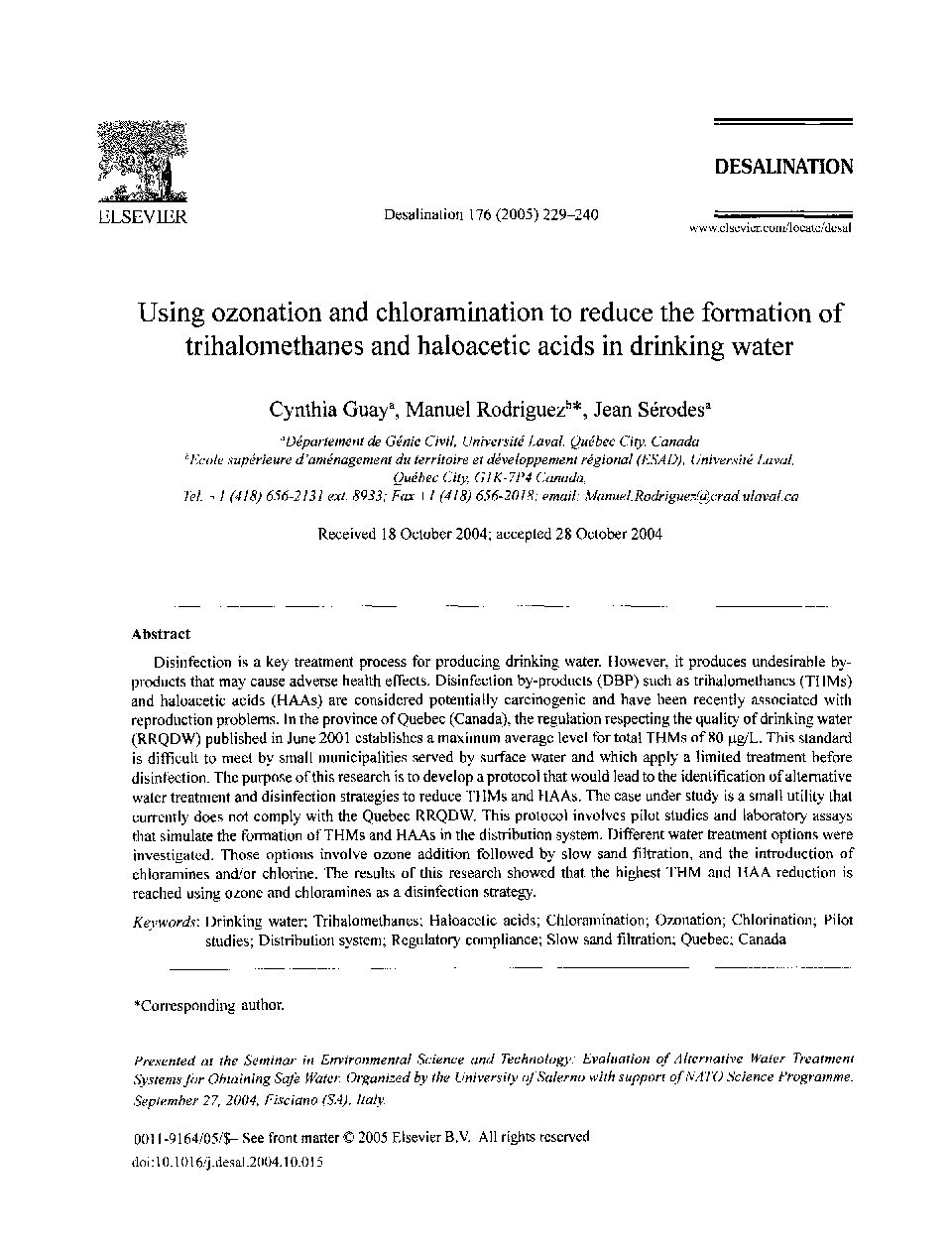| کد مقاله | کد نشریه | سال انتشار | مقاله انگلیسی | نسخه تمام متن |
|---|---|---|---|---|
| 9681218 | 1455514 | 2005 | 12 صفحه PDF | دانلود رایگان |
عنوان انگلیسی مقاله ISI
Using ozonation and chloramination to reduce the formation of trihalomethanes and haloacetic acids in drinking water
دانلود مقاله + سفارش ترجمه
دانلود مقاله ISI انگلیسی
رایگان برای ایرانیان
کلمات کلیدی
TrihalomethanesDrinking water - آب آشامیدنیHaloacetic acids - اسیدهای هالوسیتیکOzonation - اوزون زنیRegulatory compliance - رعایت مقرراتDistribution system - سیستم توزیعSlow sand filtration - فیلتر کردن شن و ماسه آهستهPilot studies - مطالعات خلبانCanada - کاناداQuebec - کبکChloramination - کلرامینChlorination - کلرزنی
موضوعات مرتبط
مهندسی و علوم پایه
مهندسی شیمی
تصفیه و جداسازی
پیش نمایش صفحه اول مقاله

چکیده انگلیسی
Disinfection is a key treatment process for producing drinking water. However, it produces undesirable byproducts that may cause adverse health effects. Disinfection by-products (DBP) such as trihalomethanes (THMs) and haloacetic acids (HAAs) are considered potentially carcinogenic and have been recently associated with reproduction problems. In the province of Quebec (Canada), the regulation respecting the quality of drinking water (RRQDW) published in June 2001 establishes a maximum average level for total THMs of 80 g/L. This standard is difficult to meet by small municipalities served by surface water and which apply a limited treatment before disinfection. The purpose of this research is to develop a protocol that would lead to the identification of alternative water treatment and disinfection strategies to reduce THMs and HAAs. The case under study is a small utility that currently does not comply with the Quebec RRQDW. This protocol involves pilot studies and laboratory assays that simulate the formation of THMs and HAAs in the distribution system. Different water treatment options were investigated. Those options involve ozone addition followed by slow sand filtration, and the introduction of chloramines and/or chlorine. The results of this research showed that the highest THM and HAA reduction is reached using ozone and chloramines as a disinfection strategy.
ناشر
Database: Elsevier - ScienceDirect (ساینس دایرکت)
Journal: Desalination - Volume 176, Issues 1â3, 10 June 2005, Pages 229-240
Journal: Desalination - Volume 176, Issues 1â3, 10 June 2005, Pages 229-240
نویسندگان
Cynthia Guay, Manuel Rodriguez, Jean Sérodes,